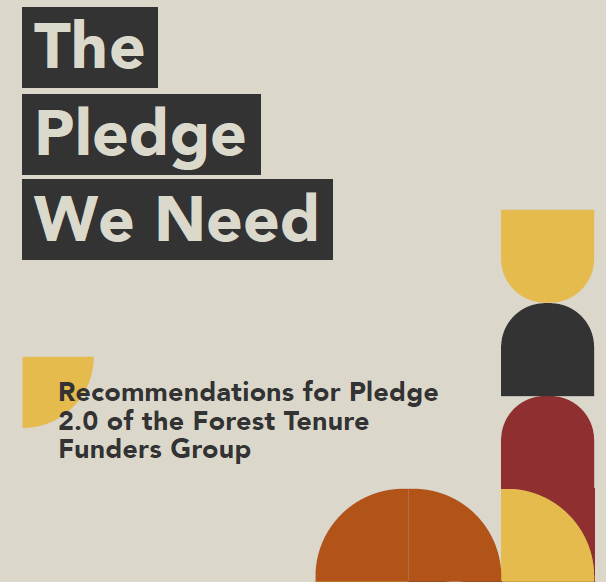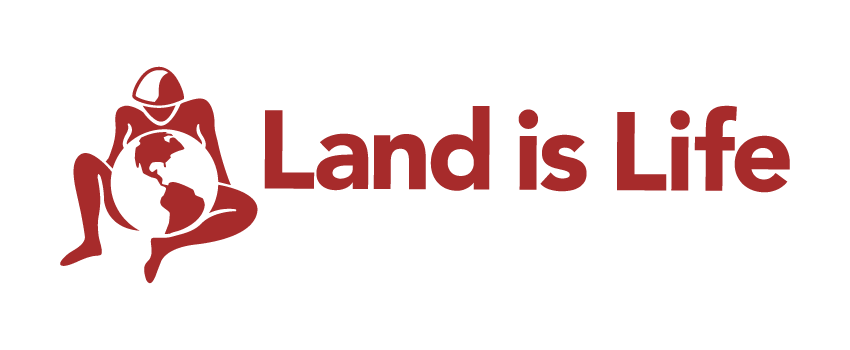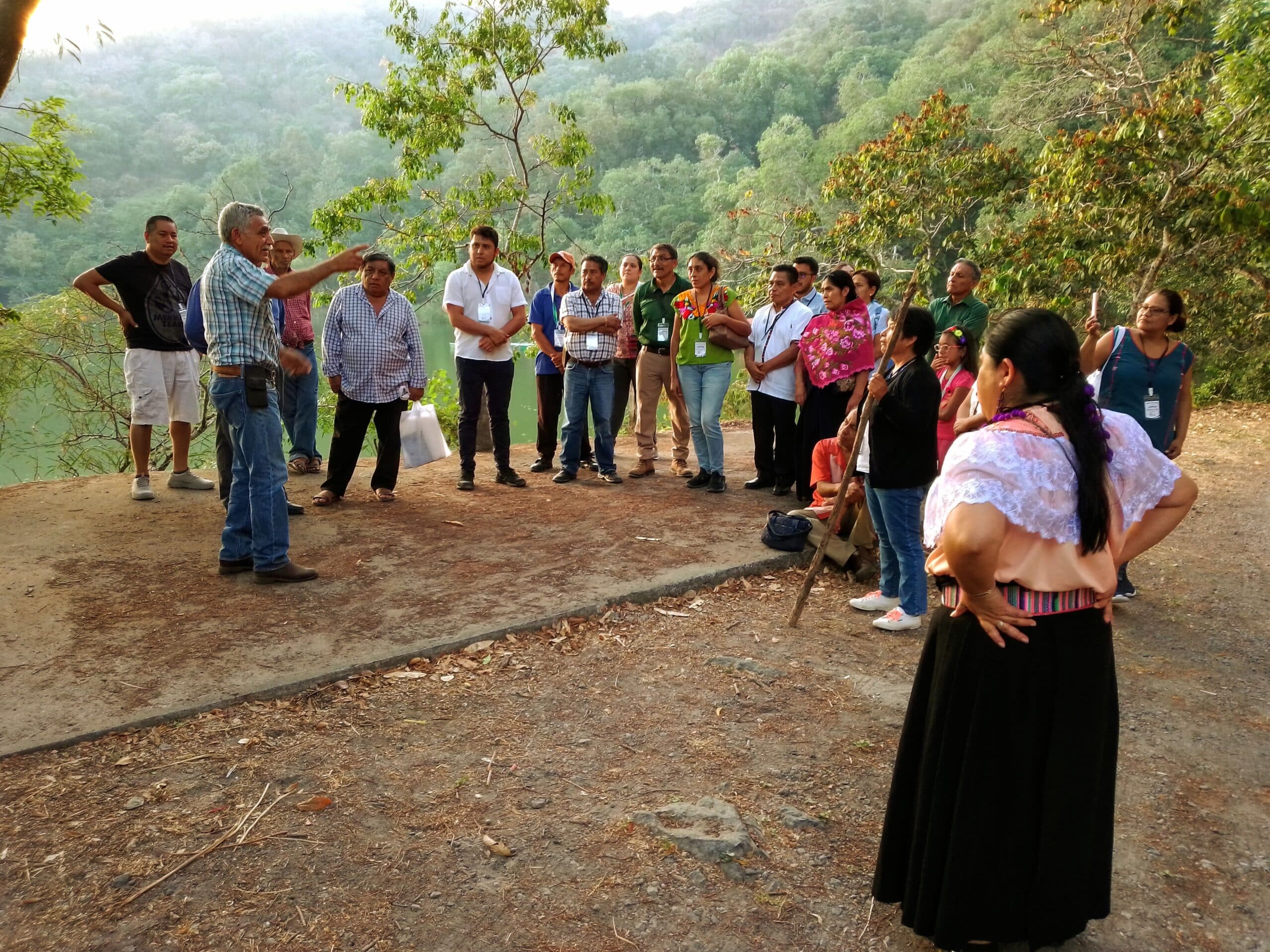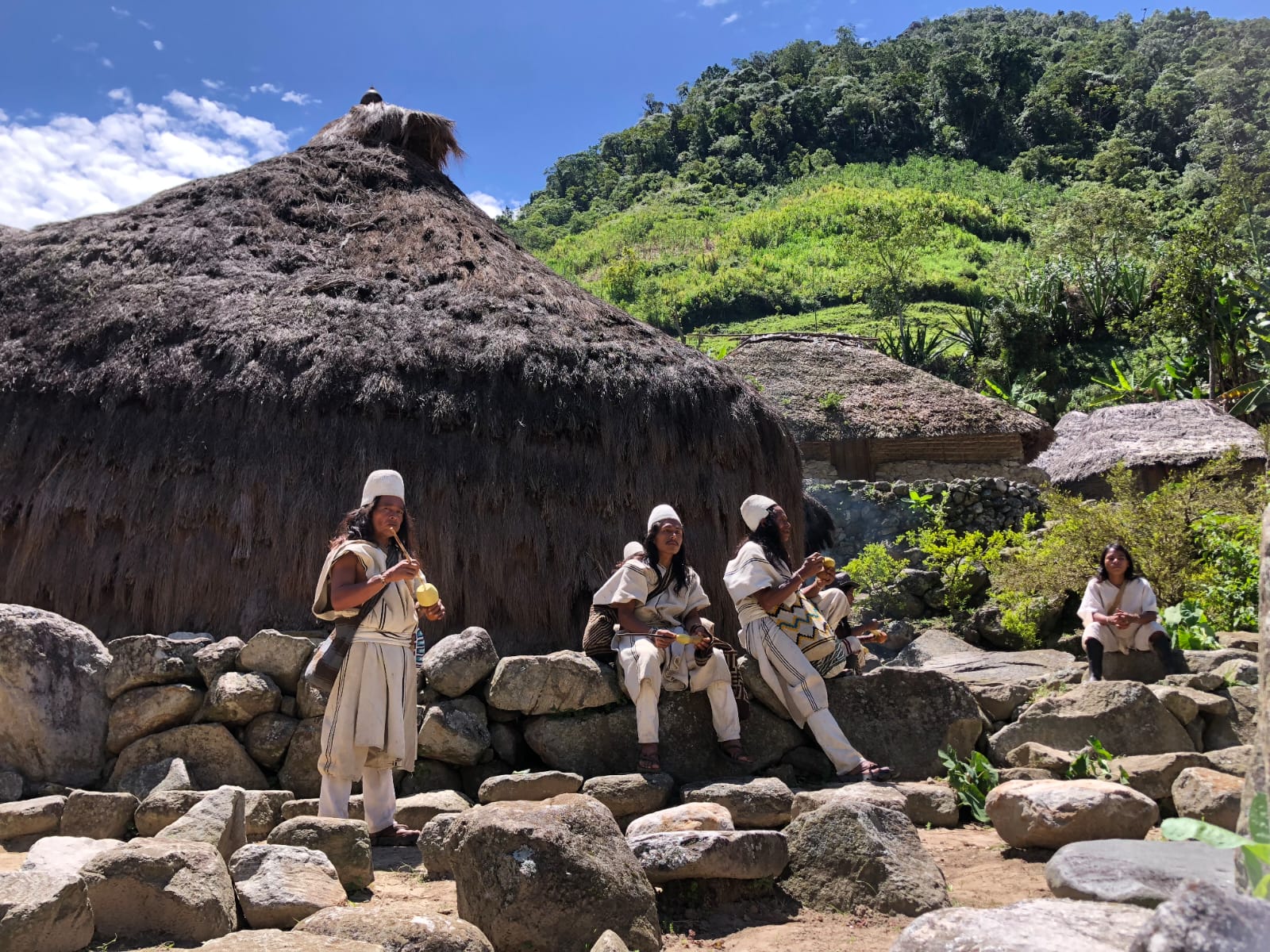
Recommendations for Pledge 2.0 of the Forest Tenure Funders Group
To: Forest Tenure Funders Group
The historic commitment that the Forest Tenure Funders Group made at COP26 – to invest $1.7 billion to advance forest tenure rights in tropical forest countries between 2021-2025 – has benefitted Indigenous Peoples in tropical forest countries in Africa, Asia and Latin America, and has been crucial in drawing international attention to the key role that Indigenous Peoples can play in finding solutions to the challenges presented by global climate change and in safeguarding the world’s biological diversity.
We understand that the Forest Tenure Funders Group has begun discussing the framework for a second pledge (“Pledge 2.0”). In this letter, we offer our recommendations and encourage you to use them to inform the discussions related to a second pledge. We view these recommendations as necessary elements in order for the second pledge to provide a realistic assessment of the enormity of the challenges presented by global climate change, and to learn from and build upon the successes and the deficiencies in implementing the first pledge. We write this letter in the spirit of collaboration and with a commitment to contribute to an effective Pledge 2.0.
- Expand the scope of the fund to ensure protection of biological diversity, and to cover all biomes throughout the world’s seven socio-cultural regions.
Like the nature of human rights, climate change and the loss of biological diversity are interrelated, interdependent, and indivisible. This is a global phenomenon, and it must be addressed globally. Unfortunately, political economy and the adverse impacts of climate change make no distinction between the “developed” and “developing” world, despite Indigenous Peoples facing its most severe consequences. The drivers are the same and impact ecosystems across every region on Earth. The biomes of the Earth are interconnected. What happens in one ecosystem affects all other ecosystems. The permafrost soils, ice and glacial underside melt, and deep ocean temperatures of the polar regions influence mid-latitude conditions.1 The health of the Andes is directly linked to the health of the Amazon. Just as the jet streams that carry North African dust nourish the Amazon Basin, the impacts on the African deserts are reflected in the Amazon basin. What impacts the weather Serengeti impacts the Congo forest; destruction of coastal zones in Indonesia negatively impacts the forests of Papua.
Maintaining the ecological integrity of the Earth’s remaining intact, large-scale, landscapes is necessary for global climatic stability. Given that Indigenous Peoples are the guardians of these remaining landscapes, it is our hope that the Forest Tenure Funders Group will engage Indigenous Peoples from around the world while developing the scope and goals of Pledge 2.0, and that any new funding will recognize the interconnectedness of global climate change and biological diversity, and be made available to Indigenous Peoples from the seven socio-cultural regions. - Promote respect for, recognition of, and full realization of Indigenous Peoples’ rights.
Echoing the Outcome Document from the meeting of the United Nations Permanent Forum on Indigenous Issues, the UN Expert Mechanism on the Rights of Indigenous Peoples, and the UN Special Rapporteur on the Rights of Indigenous Peoples, which took place February 26 – 28, 2024, “The respect for and recognition of the inherent rights, status, and role of Indigenous Peoples are directly related to the language and methods of work of the UN Entities, including the Secretariats of treaties, Member States, multilateral and bilateral financial institutions, intergovernmental organizations, international organizations, foundations, funders and Non-Governmental Organizations..”
Respect for the distinct rights and status of Indigenous Peoples, consistent with the UN Declaration on the Rights of Indigenous Peoples (UNDRIP) and other international human rights instruments, requires acknowledging Indigenous Peoples as collective rights-holders, distinct from “stakeholders”, “minorities”, or “local communities”. Recognizing the distinct status, rights, and role of Indigenous Peoples in a Pledge 2.0 will advance the realization of the UNDRIP, avoid perpetuating the challenges faced by Indigenous Peoples due to conflating them with other populations, and facilitate more accurate data collection, and empower Indigenous Peoples from every region to advance their diverse perspectives, distinct Knowledge systems, and their solutions for the benefit of humankind. - Prioritize support for Indigenous Peoples’ self-determination.
Tenure rights alone do not guarantee protection of Indigenous Peoples’ territories. The Maasai of Loliondo Division and Ngorongoro Conservation Area (NCA), who are being violently evicted from their territory, hold legal title to their land. The Yanomami, who are being decimated by the continuing invasion of miners, hold legal title to their land. The Mayagna People of Awas Tingni won their land title by litigating their historic case in the Interamerican Court on Human Rights in 2001, yet today over 90% of the people who live in their territory are colonists. The comprehensive, modern day treaties between Inuit and the government of Canada are not shielding them or their lands from further marginalization and exploitation, compounded by an Arctic that is warming almost four times faster than the rest of the planet.2
Ensuring secure tenure rights requires recognition of, and respect for, Indigenous Peoples’ right to self-determination, which is recognized as the pre-requisite for the exercise and enjoyment of all other human rights. Achieving self-determination is a political struggle that remains elusive. Pledge 2.0 cannot shy away from this struggle. Supporting the strategic political work and alliance building of Indigenous Peoples is key, as is support for Indigenous Peoples’ governance structures, knowledge systems, community mapping, physical demarcation of territories, and legal and administrative support. Safeguarding territorial integrity and ensuring the long-term health of Indigenous Peoples’ resource management systems also requires building local, sustainable economies. These efforts should be prioritized in Pledge 2.0. - In every phase of identifying, developing, implementing, monitoring and evaluating Pledge 2.0, engage Indigenous Peoples’ organizations that have mandates to represent their communities.
Direct ongoing, effective, inclusive and meaningful participation of Indigenous Peoples’ representatives, as partners in Pledge 2.0, will ensure efficiency, impact, transparency and accountability. Their effective participation will also enable the development of regional and thematic strategies that are based on Indigenous Peoples’ own priorities. Consistent with international human rights norms, a process of co-creation will facilitate the development of criteria to ensure that intermediary organizations have the capacity to strengthen and support the visions and autonomy of Indigenous Peoples, and allow for the development of relevant indicators that can measure the quality of Pledge 2.0 investments. An inclusive and participatory oversight mechanism, composed of funders and Indigenous Peoples’ representatives, will ensure that the right of Free, Prior and Informed Consent is adhered to in all projects and programs supported by Pledge 2.0. Such an approach may result in a significant contribution to the actual realization of the rights affirmed in the UNDRIP, a challenge faced by Indigenous Peoples in every region of the world. - Invest in Indigenous women and girls.
Meaningful and sustained engagement with, and support of, Indigenous women and girls (as key knowledge holders, not simply victims of the climate crisis) is essential to ensuring gender equality, sustainable management of resources and equitable benefit sharing. Funding should prioritize supporting Indigenous women and girls’ livelihoods, organizations, and their ongoing participation in national, regional and international decision-making processes regarding climate change, biodiversity protection, and sustainable management of natural resources.
The recommendations are endorsed by the following Indigenous Peoples’ Organizations.
- Land is Life
- Sami Parliament Finland
- Asia Indigenous Peoples Pact – AIPP
- Tin-Hinane Association
- Inuit Circumpolar Council
- Organización Wiwa Yugumaiun Bunkuanarua Tayrona – OWYBT
- Cordillera Peoples’ Alliance – CPA
- Pueblo Originario Kichwa de Sarayaku
- InterTribal Committee
- Pastoral Women’s Council- PWC
- Indigenous Movement for Peace Advancement & Conflict Transformation –
IMPACT - Ngetha Media Association for Peace – NMAP
- Center for Research and Advocacy in Manipur – CRAM
- Gobierno Territorial Autónomo de la Nación CHAPRA
- Mbororo Social and Cultural Development Association – MBOSCUDA
- Benet Mosop Community Association – BMCA
- Coordinadora Andina de Organizaciones Indígenas – CAOI
- Central de Comunidades Indígena Tacana II del Río Madre de Dios – CITRMD.
- Enkishon Indigenous Initiative
- Chepkitale Indigenous People Development Project – CIPDP
- Koibatek Ogiek Women’s and Youth Network – KOWYN
- African Indigenous Foundation for Energy and Sustainable Development – AIFES
- Federation Des ONG SAFAL
- Asociación de Mujeres Saparas de Ecuador ASHIÑWAKA
- Confederación Indígena Tayrona CIT
- Cooperative Allah Wallou Transformation De Produits Laitiers
- Autoridades Tradicionales Indígenas de Colombia Gobierno Mayor
- Ogiek Peoples’ Development Program – OPDP
- Association Acal El Hajeb Pour La Culture Et Le Développement
- Jamii Asilia Centre
- Action pour le Développement Durable – ACDD
- Cabildo Indígena del Resguardo kankuamo
- Dignité Pygmée (DIPY) – Democratic Republic of the Congo (DRC)
- Pastoralists Indigenous Non Governmental Organizations Forum – Pingos
- Forum des Femmes Autochtones Du Cameroun – CAIWOF
- Unissons Nous Pour la Promotion Des Batwa – UNIPROBA
- Yayasan Anak Dusun Papua – YADUPA
- Indigenous Amazigh Network – AZUL
- Organización Payipie Ichadie Totobiegosode – OPIT
- Federación de Comunidades Nativas Fronterizas del Putumayo –
FECONAFROPU - Sengwer Indigenous Community Trust
- Traditional Ecosystems Survival Tanzania -TEST
- Snowchange Cooperative – Arctic Circle
- Indigenous Community Conservation Initiatives
- Comisión Nacional de Territorios Indígenas – CNTI



